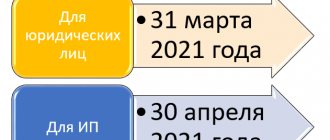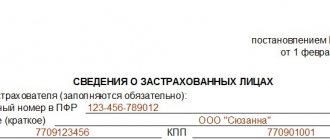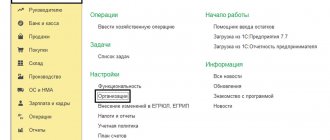Home • Blog • Blog for entrepreneurs • Zero reporting for individual entrepreneurs: how to submit
Zero reporting of an individual entrepreneur or, as it is also called, “zero” is a declaration that an individual entrepreneur submits to the Federal Tax Service in the absence of income for the tax period. Even though no profit was made, the business owner still needs to report to the regulatory authority. According to Federal Tax Service experts, lack of income does not exempt an entrepreneur from filing a tax return.
Individual entrepreneurs will have to submit zero reporting when using the following tax regimes: “simplified”, general system, unified agricultural tax. From January 1, 2021, UTII is no longer valid. For entrepreneurs with a patent, filing a tax return is not provided.
Zero reporting for individual entrepreneurs on the simplified tax system
The tax period under the simplified tax system is a calendar year. Upon completion, individual entrepreneurs submit a declaration to the Federal Tax Service office at their place of residence.
For individual entrepreneurs, there is a deadline of April 30 of the year that follows the previous tax period (for which, in fact, the tax return is filed). If a businessman ceases business activities, he should submit reports before the 25th day of the month following the month of filing the relevant notification to the Federal Tax Service.
The zero reporting of an individual entrepreneur on the simplified tax system should not be confused with a declaration in which there is profit, but the tax base is negative or equal to zero. This situation may arise when using the taxation object “Income minus expenses”. This falls under the minimum tax rule, which is 1% of the total (“dirty”) profit. If you fail to pay it or fail to submit a declaration, the entrepreneur will be fined.
Rules for filling out the declaration
Filling out a tax return is done manually, using special programs or online services. Zero reporting differs from other similar documents in the absence of calculations. The document consists of a title page and three sections.
The title page contains the following information:
- Businessman's TIN;
- correction number (indicate the number 0);
- year corresponding to the tax period;/li>
- tax period code (in case of reorganization it is set to 50, in other cases - 34);
- OKVED, according to information from Rosstat;
- name of the individual entrepreneur;
- entrepreneur's phone number;
- number of document pages;
- codes of the tax authority and place of registration.
The title page must be dated, signed by the taxpayer and stamped, if available.
Note!
- 1. The first section consists of two subsections (for different tax objects). The entrepreneur fills out the one that corresponds to his work. Section 1 contains information about advance payments. But since in this case they are zero, you need to put dashes. However, you will still have to indicate OKTMO codes that correspond to the territorial affiliation of the individual entrepreneur.
- 2. The second section of the declaration contains data on the amounts of tax payments. In the presented case, they are also zero, therefore, as in the previous section, dashes are added. But the tax rate values are indicated.
- 3. Zero reporting for individual entrepreneurs does not require completion of the third section.
The essence of a zero declaration under the simplified tax system
In the legislation of the Russian Federation there is no such term as “zero declaration”. This concept is used among individual entrepreneurs.
A zero declaration under the simplified tax system for individual entrepreneurs is a document that reflects data for the tax period during which there was no movement of funds through the individual entrepreneur’s accounts. As a result, the formation of a tax base for calculating payments to the state is excluded.
Refusal to submit a declaration to the Federal Tax Service faces penalties, even if the individual entrepreneur did not operate.
A zero declaration under the simplified tax system is not an empty document. Calculation of tax according to the simplified tax system taking into account “net” income (when all expenses are taken away) leads to the formation of losses (for the past year). Despite the presence of losses, the individual entrepreneur will still have to pay a tax of 1% (of income).
The only exception can be an individual entrepreneur who uses income as an object of taxation. Lack of income in this case does not imply payment of individual entrepreneur tax.
Despite the lack of income, the individual entrepreneur is obliged to make certain payments to the budget in any case. Such payments include mandatory fixed contributions of individual entrepreneurs for themselves for pension and health insurance.
The amount of these payments increases annually with the following dynamics:
- In 2021, the amount of fixed contributions for these purposes was 32,385 rubles. Including 26,545 rubles for pension insurance and 5,840 rubles for medical insurance.
- In 2021, the amount of fixed contributions increased and was already 36,238 rubles (29,354 for pension insurance; 6,884 for medical insurance).
- In 2021, there will be another increase in the size of fixed contributions. The total amount of contributions payable in 2021 will be 40,874 rubles, including 32,448 rubles for pension insurance and 8,426 rubles for medical insurance.
Zero reporting for individual entrepreneurs on OSNO
The general regime provides for a number of taxes that an entrepreneur must pay. You must file a tax return for each, even if you have no income. Zero reporting of individual entrepreneurs on OSNO consists of several documents.
Zero VAT reporting
The VAT return is submitted every quarter. It consists of a title page and mandatory sections. It can only be submitted electronically. Filling out on paper is not acceptable. The declaration is submitted by the 25th day of the month following the expired quarter.
The generally accepted VAT return may not be used in the absence of activity. If there is no turnover, sales or movement of money, the entrepreneur has the right to submit a single simplified declaration in the KND form 1151085. It will replace several types of reporting that must be submitted.
The title page of the VAT return for OSNO contains standard data (TIN, tax period, etc.). However, starting from the 4th quarter of 2021, an updated reporting version is in effect. The changes affected the design of the title page, which now does not contain OKVED details. In the first section, lines have been added to reflect data on investment protection and promotion agreements. Some changes have been made to operation codes, including for IT companies.
Sections of the VAT return contain data on tax amounts, as well as other information confirming the conduct of activities. If it was not carried out by the entrepreneur, there will be dashes in all lines. Only the necessary codes are indicated, as when submitting zero reports for individual entrepreneurs on the simplified tax system.
Zero income tax reporting
3-NDFL is submitted no later than April 30 of the year that follows the expired tax period (calendar year).
The title page contains the following information:
- correction number;
- tax period code;
- personal data of the taxpayer;
- details of the identity document;
- other.
The remaining sections contain information about the amounts of income, taxes, deductions and other things. Therefore, as in previous cases, most lines contain a dash.
Reporting on other taxes
Declarations for other taxes are submitted by individual entrepreneurs to OSNO only if there is an object: land, water resources, etc. If they are not used, then there is no need to submit reports.
If there was no activity during the calendar year, you will have to submit the balance sheet. You will have to indicate, at a minimum, the amount of the authorized capital in liabilities and fill in one of the asset lines.
Zero reporting on insurance premiums
If an entrepreneur has hired employees, then insurance premiums must be paid for them. Lack of activity does not exempt you from certain types of reporting.
Let's take a closer look at the types of reports on insurance premiums:
- 6-NDFL - no need to submit if the entrepreneur did not transfer money to the employees;
- 2-NDFL - reporting is not submitted in the absence of activity;
- data on the average number of employees - must be submitted as long as there is at least one employee on staff;
- calculation of insurance premiums - you need to submit zero individual entrepreneur reports;
- SZV-M and SZV-experience - submitted if there are valid employment contracts.
The deadlines for submitting reports on insurance premiums are standard.
Zero tax report for individual entrepreneurs
We discussed above that declarations are submitted by both entrepreneurs making a profit and those who are no longer active. In some cases, the tax service may have doubts about the information being transmitted. Then the Federal Tax Service sends a request to the bank.
If there were no cash receipts, the tax office will not have questions regarding the zero report of the individual entrepreneur. If the money has been deposited into the account, the inspection will require clarification.
IP on OSNO
An individual entrepreneur using the general taxation system must submit zero reporting for 3-NDFL and VAT, even if there is no income.
The VAT report is quarterly and must be submitted within 25 days after the end of the reporting quarter. 3-NDFL is compiled based on the results of the past year and is due by April 30.
IP on the simplified tax system
Under the simplified taxation system, the declaration is submitted once a year. If the indicators are zero, the report must also be submitted by April 30.
It would be useful to draw up a zero book of income and expenses. Tax inspectors may request a book to confirm the data received.
IP on UTII
With a single tax on imputed income, there is no zero declaration. The essence of this regime is that the tax does not depend on real income, but on expected income. If no business activity was carried out, a notice of deregistration must be submitted to the tax office within 5 days.
We recommend reading: Zero reporting for individual entrepreneurs on the simplified tax system: when and how to submit.
Filing reports using a single simplified declaration
Working under any tax regime, an entrepreneur has the right to submit a single simplified declaration if the individual entrepreneur does not have operations related to the movement of money.
The procedure for filling out and submitting a single simplified declaration:
- the document is presented to the Federal Tax Service at the place of residence of the entrepreneur;
- declaration form: on paper or electronically;
- reporting must be submitted by the 20th day of the month following the expired period;
- You can submit the document to the tax service in person or through a representative, send it by mail or transmit it via telecommunication channels.
The document is drawn up according to the KND form 1151085. It contains the following data:
- TIN of the entrepreneur;
- type of document (primary or corrective);
- name and code of the FND branch where the declaration is submitted;
- personal data of the entrepreneur;
- OKATO and OKVED codes;
- taxes for which a declaration was submitted, but no activity was carried out;
- reporting period and others.
Often, a single simplified declaration is submitted by entrepreneurs who have recently registered and have not had time to conclude a single transaction.
Fines
Thus, an individual entrepreneur needs to submit zero reporting using the simplified tax system, the general taxation regime, and the unified agricultural tax. Failure to submit declarations will result in fines.
Violation of deadlines or failure to provide zero reporting is regulated by Art. 119 of the Tax Code of the Russian Federation. According to the current article, the amount of fines is 5% of the amount of unpaid taxes, but not less than 1,000 rubles, which is relevant in the absence of activity and income.
According to Art. 15.5 of the Code of Administrative Offenses of the Russian Federation, offenders face a warning (for the first violation) or a fine of 300 to 500 rubles.
How much to pay for zero reporting of individual entrepreneurs? If there is no activity, dashes are added to the declaration. Accordingly, you don’t need to pay anything.
Need help with zero reporting?
Don’t waste time, we will provide a free consultation and help you submit zero reports on the most favorable terms.
In what case is it necessary to submit “zero” personal income tax reporting?
“Zero” reporting 6-NDFL
Doesn't seem like it. Form 6-NDFL is submitted if during the reporting period your company paid any money to individuals and, accordingly, became a tax agent. If no funds were paid to individuals, it will not be possible to submit “zero” reports.
“Zero” reporting 2-NDFL
Submission of a “zero” certificate in form 2-NDFL is not provided. That is, you don’t have to submit “zero” reporting. But the fiscal authority may require clarification from you regarding non-payment of wages. You can respond to the request in any form, explaining the reason for non-payment. In extreme cases, your “explanatory statement” will be asked to be supported by a certificate from the bank about the lack of activity on current accounts.
“Zero” declaration 3-NDFL
Form 3-NDFL is required to be submitted to OSNO . In this document, a “title sheet” is filled out with all the data of the enterprise or organization, including OKTMO code, KBK, TIN and other data. We put zeros on the remaining sheets.
Read the material on the topic: How to obtain an extract from the Unified State Register of Individual Entrepreneurs for individual entrepreneurs: 4 options









